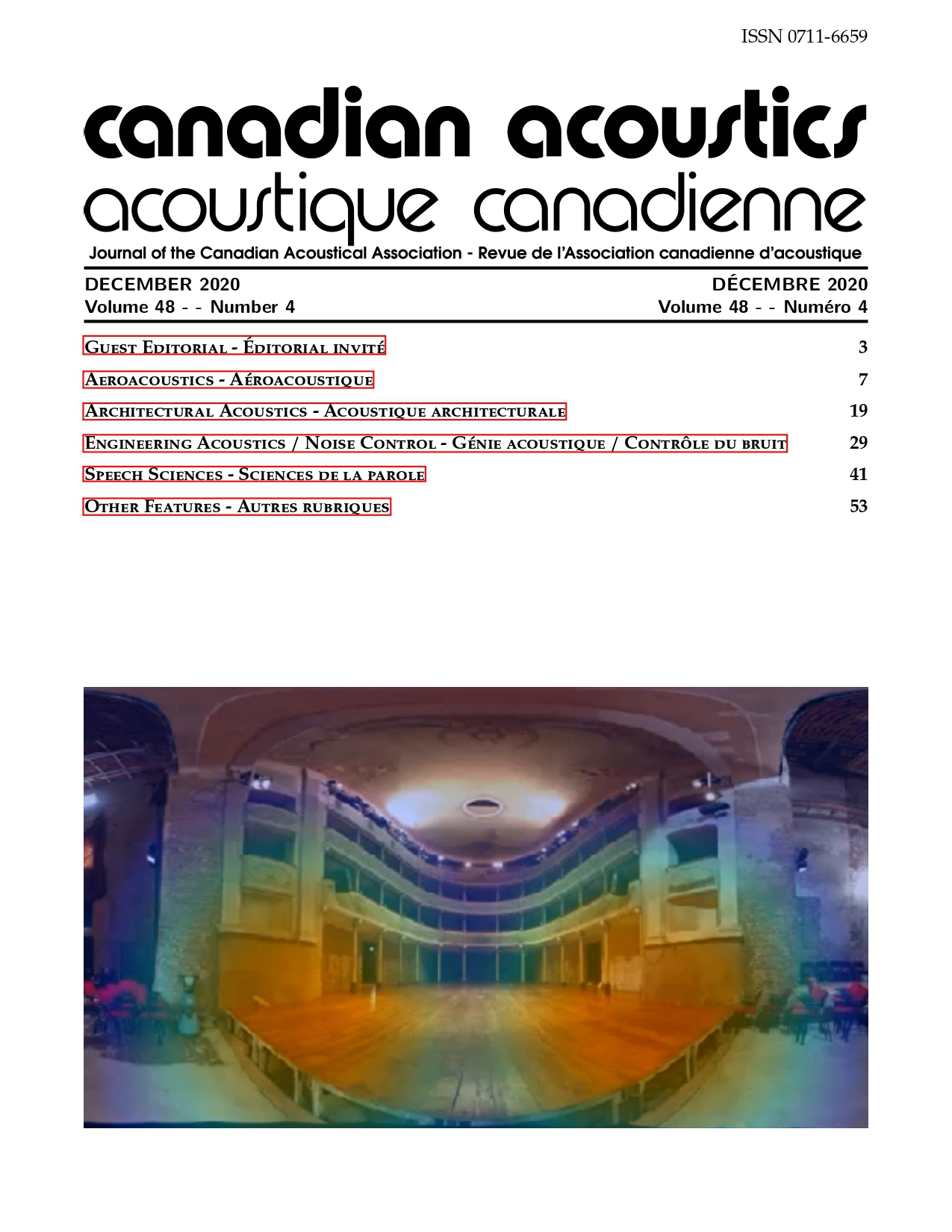Optimization and Testing of Flat-Plate Trailing-Edge Serration Geometry for Reducing Airfoil Self-Noise
Keywords:
aircraft wind design, Turbulent boundary layers, Trailing edge noise, Aircraft noiseAbstract
With an expanding network of transportation and the use of air traffic, noise radiated from civil aircraft during takeoff and landing have become a major concern to communities nearby airports. The objective of this work is to investigate the reduction of turbulent boundary layer-trailing edge (TBL-TE) interaction noise. In order to test the concept of noise reduction, the required experimental setup is designed and created. The first part of this study focuses on developing an aeroacoustic wind tunnel test section at Carleton University. The test section walls have been acoustically treated to simulate an acoustically far-field environment with forwarding flight. The two sides of the wind tunnel test section are fitted with anechoic chambers and lined with acoustic transparency tensioned cloth screens which act as an interface between the test section and the anechoic chambers to provide a smooth flow surface while eliminating the need for a jet catcher and reducing interference effects. The ability of the trailing edge serrations to reduce TBL-TE noise is first analyzed through numerical optimization study, and trailing edges are after tested in a wind tunnel. Three different serration geometries are investigated. The noise spectra were modelled using Howe semi-empirical model for a semi-infinite flat plate, at zero angles of attack and low Mach number. NACA 0012 airfoil and flat-plate trailing edges are analyzed and tested. The results of the optimization studies are used to examine the influence of serration design parameters. It is shown that the sawtooth serrated trailing edges yield greater noise reductions than slitted and sinusoidal serrated trailing edges. Experimental and optimization results are then compared. It is concluded that numerical and experimental results are in agreement showing that optimized serrated trailing edge configurations can yield less TBL-TE noise compared to the traditional straight-trailing edge configuration.
Additional Files
Published
How to Cite
Issue
Section
License
Author Licensing Addendum
This Licensing Addendum ("Addendum") is entered into between the undersigned Author(s) and Canadian Acoustics journal published by the Canadian Acoustical Association (hereinafter referred to as the "Publisher"). The Author(s) and the Publisher agree as follows:
-
Retained Rights: The Author(s) retain(s) the following rights:
- The right to reproduce, distribute, and publicly display the Work on the Author's personal website or the website of the Author's institution.
- The right to use the Work in the Author's teaching activities and presentations.
- The right to include the Work in a compilation for the Author's personal use, not for sale.
-
Grant of License: The Author(s) grant(s) to the Publisher a worldwide exclusive license to publish, reproduce, distribute, and display the Work in Canadian Acoustics and any other formats and media deemed appropriate by the Publisher.
-
Attribution: The Publisher agrees to include proper attribution to the Author(s) in all publications and reproductions of the Work.
-
No Conflict: This Addendum is intended to be in harmony with, and not in conflict with, the terms and conditions of the original agreement entered into between the Author(s) and the Publisher.
-
Copyright Clause: Copyright on articles is held by the Author(s). The corresponding Author has the right to grant on behalf of all Authors and does grant on behalf of all Authors, a worldwide exclusive license to the Publisher and its licensees in perpetuity, in all forms, formats, and media (whether known now or created in the future), including but not limited to the rights to publish, reproduce, distribute, display, store, translate, create adaptations, reprints, include within collections, and create summaries, extracts, and/or abstracts of the Contribution.


